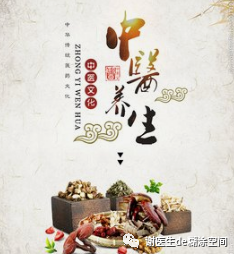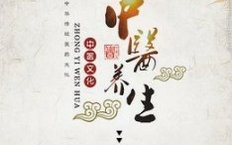
Introduction: Mr. Tao Yufeng has compiled 24 clinical treatment references for “Cang Zhu” based on ancient texts, the experiences of medical practitioners throughout history, and his own clinical insights, which are worth learning and collecting.
1
Cang Zhu (Atractylodes) promotes sweating and is more effective than Bai Zhu (White Atractylodes); it supplements and eliminates dampness, but its strength is not as great as Bai Zhu.Generally, for deficient soil, it should be used with Bai Zhu to nourish it; for excess soil, it should be used with Cang Zhu to balance it.
It is said that Bai Zhu retains while Cang Zhu disperses, hence Bai Zhu is good for supplementation, while Cang Zhu is good for dispersing. Cang Zhu aids digestion and stops vomiting and diarrhea similarly to Bai Zhu, but it uniquely excels at relieving water retention and stagnation.
2
Cang Zhu governs dampness in the upper, middle, and lower jiao (regions).
When dampness is in the upper jiao, it easily produces phlegm; thus, it is used to dry dampness and resolve phlegm. When dampness is in the middle jiao, it causes stagnation and diarrhea; thus, it is used to regulate the middle jiao and strengthen the spleen. When dampness is in the lower jiao, it leads to weakness in the legs and knees, and it can be used with Huang Bai (Phellodendron) to treat weakness (adding Niu Xi (Achyranthes) is even better), which can strengthen the legs and knees.
3
Cang Zhu combined with Huang Bai treats damp-heat in the lower jiao; Huang Bai is bitter, which overcomes heat, thus it can eliminate heat from dampness; Cang Zhu is drying, which overcomes dampness, thus it can eliminate dampness from heat. The two complement each other, hence the formula is called Er Miao (Two Marvels).
4
Cang Zhu and Chuan Xiong (Ligusticum) can resolve various stagnations, adding other herbs according to the symptoms.
It is said that Cang Zhu combined with Xiang Fu (Cyperus) and Chuan Xiong can resolve various stagnations.
Stagnations of phlegm, fire, dampness, food, qi, and blood are all due to abnormal transformation and cannot rise or fall, with the disease located in the middle jiao, thus the herbs must assist in both rising and descending.
Cang Zhu is a herb of the Foot Yangming channel, with a pungent and strong flavor, it strengthens the stomach and spleen, promotes the qi of grains, can directly enter other herbs, dispel the dampness of Yangming, and promote circulation; Xiang Fu is a herb that quickly regulates qi in the yin, it descends qi rapidly, thus the two herbs work together to disperse stagnation and balance.
5
Cang Zhu when combined with Huang Bai, Niu Xi, and Shi Gao (Gypsum) can guide downward to eliminate damp phlegm from the lower jiao; when combined with Gan Cao (Licorice), Chen Pi (Dried Tangerine Peel), and Hou Po (Magnolia Bark), it can eliminate dampness from the middle jiao and balance the excess qi in the stomach; when combined with scallions, Ma Huang (Ephedra), and Xing Ren (Apricot Kernel), it can eliminate evils from the flesh to the skin surface.
6
Cang Zhu combined with Fang Feng (Saposhnikovia) promotes sweating, combined with Huang Bai it overcomes dampness, and combined with Shan Zhi Zi (Gardenia) it resolves the dryness of Cang Zhu.
7
Cang Zhu combined with Qiang Huo (Notopterygium) stops body pain; combined with Shu Di (Rehmannia) and Gan Jiang (Dried Ginger), it treats sallow complexion and poor appetite; combined with Huang Bai, Niu Xi, Mu Guo (Chaenomeles), and Shi Hu (Dendrobium), it can strengthen walking ability; combined with Ku Shen (Sophora) and Mu Li (Oyster Shell), it treats children’s stomach damp-heat, preventing the formation of muscle; combined with Mai Dong (Ophiopogon), Shi Hu, Huang Bai, Bai Shao (White Peony), Mu Guo, Yi Ren (Job’s Tears), and Wu Wei Zi (Schisandra), it is a key herb for treating weakness.
8
Cang Zhu is a holy herb for treating dampness, especially effective when paired with Ma Huang.
When the two herbs are used in equal amounts, they can induce a great sweat; if Cang Zhu is used in double the amount of Ma Huang, it induces a small sweat; if Cang Zhu is three times that of Ma Huang, it increases urination, having a diuretic effect; if Cang Zhu is four times that of Ma Huang, although there is no significant sweating or urination, the damp evil can transform itself.
9
Cang Zhu has a good function of promoting qi and resolving stagnation, clinically indicated for abdominal distension, thick and greasy tongue coating.For mere qi stagnation, 6-10 grams is appropriate; if qi stagnation is accompanied by dampness, 10-15 grams can be used.
If it is due to liver qi stagnation transforming into fire harming yin, Cang Zhu can be stir-fried with Hei Zhi Ma (Black Sesame); or combined with Shi Hu, Mai Dong, and Xuan Shen (Scrophularia) to avoid harming fluids and depleting yin.
Cang Zhu combined with a small amount of Gui Zhi (Cinnamon Twig) can disperse liver dampness; combined with Sheng Ma (Cimicifuga), it can promote clear qi upward and turbid qi downward; combined with Shu Di, it can supplement without stagnation, also assisting spleen function.
10
Gastric ptosis is often due to spleen deficiency and sinking of middle qi, often accompanied by damp evil, with damp turbidity not transforming, making it difficult for clear qi to rise. This can be treated with Cang Zhu soaked in hot water, used as a tea, 20 grams daily, which is effective and does not harm yin or create dryness.
11
Cang Zhu is very effective for treating gastric ptosis.
Li Dongyuan referred to Cang Zhu as the “key herb for treating weakness.” Weakness refers to the relaxation and weakness of the tendons and meridians. Gastric ptosis is caused by the relaxation of the supporting ligaments of the stomach or the relaxation of the stomach wall, which aligns with the TCM understanding of weakness of the spleen and stomach, leading to the sinking of middle qi and inability to lift.
12
Cang Zhu can reduce swelling caused by water dampness or damp-heat in the lower limbs, often used with Huang Bai; for severe swelling, add Hou Po, Bi Xie (Dichroa), Fu Ling (Poria), Che Qian Zi (Plantago), Niu Xi, and Yi Ren, which enhances the function of dispelling dampness and reducing swelling.
13
For stubborn edema, using Cang Zhu in large amounts is effective.
Its mechanism is that “it relieves water and opens stagnation, Cang Zhu excels in this;” using Cang Zhu in large amounts supports spleen yang, and with sufficient yang, the spleen can function, leading to the resolution of edema.
For treating cardiac edema, which is due to insufficient spleen yang, use Cang Zhu with Gan Jiang; for lung and spleen qi deficiency, with internal stagnation of dampness, use Cang Zhu with Ma Huang, with Cang Zhu’s dosage being three to four times that of Ma Huang; for heart yang deficiency, combine with Gui Zhi; for kidney yang deficiency, combine with Fu Zi (Aconite); for damp phlegm and blood stasis, combine with Tian Qi (Notoginseng) and Ting Li Zi (Descurainia), with Cang Zhu’s dosage being between 15-20 grams. In observing a hundred patients, the edema was resolved satisfactorily.
However, it should not be used recklessly in cases of severe heat with edema.
Additionally, using Cang Zhu as the main herb, differentiated treatment for 10 cases of edema due to beriberi also showed good results.
14
A woman aged fifty initially suffered from painful urination, treated with Ba Zheng San (Eight Correcting Powder) and other formulas, but her urination remained obstructed, and her body felt like it was pricked with thorns.
Wang Kentang diagnosed it as dampness from continuous rain, the evil still on the surface, thus used Cang Zhu as the chief herb, with Fu Zi as an assistant, to induce sweating; after one dose, she sweated and her urination was immediately relieved.
15
Cang Zhu combined with Xuan Shen has a blood sugar-lowering effect. Using Cang Zhu to treat diabetes takes advantage of its ability to “consolidate spleen essence and stop the leakage of turbid fluids.”
Although Cang Zhu is drying, when combined with Xuan Shen’s moistening properties, it can enhance its strengths while mitigating its weaknesses.
16
The “Compendium of Materia Medica” states that Cang Zhu “treats damp phlegm retention or phlegm with blood stasis forming cysts.”
Phlegm turbidity and blood stasis are pathological products of diabetes, continuously affecting blood sugar biochemistry and metabolism.
Cang Zhu can be added to tonifying lung and kidney, and major qi and yin tonics, not only to strengthen the spleen and open the middle jiao, preventing the cooling and moistening herbs from harming the spleen and stomach, but also to invigorate the turbid and elevate the clear, helping to resolve high blood sugar and eliminate phlegm and stasis, thus assisting in lowering blood sugar.
It has been used in a formula of 10-15 grams of Cang Zhu combined with Huang Qi (Astragalus), Sha Shen (Glehnia), Tian Dong (Asparagus), Mai Dong, Xuan Shen, Sheng Di (Rehmannia), Shan Yao (Chinese Yam), Wu Wei Zi, etc., forming the “Jin Shui Xiang Sheng Yin” (Golden Water Generating Drink), treating 52 cases of type II diabetes, one dose daily, while gradually reducing the original hypoglycemic Western medicine, and advising patients to control their diet, manage emotions, and balance work and rest.
After taking 40 doses, according to the efficacy standards for diabetes set by the National Administration of Traditional Chinese Medicine, the total effective rate was 92%, and it was found that Cang Zhu played a crucial and indispensable role in the formula.
In a selection of 12 patients, when Cang Zhu was removed while keeping other herbs and dosages unchanged, the blood sugar reduction was significantly lower; the original formula with Cang Zhu had better and faster hypoglycemic effects.
17
Cang Zhu can treat bi syndrome, whether due to cold or heat, it can be applied.
Generally, it is combined with Fu Zi, Gui Zhi, and Gan Cao to treat cold damp pain; combined with Shi Gao, Qin Jiao (Gentiana), and Yi Ren to treat hot bi with joint redness and swelling; combined with Qiang Huo, Du Huo (Angelica), Fang Feng, and Wei Ling Xian (Clematis), to treat wind-cold-damp bi.
18
Cang Zhu is a key herb for treating gout.
For acute gout attacks, with heat predominating over dampness, use Cang Zhu as the main herb, combined with Zhi Mu (Anemarrhena), Shi Gao, and Fang Ji (Stephania). For those with weak spleen and stomach, add glutinous rice and Gan Cao; for severe pain, add Yan Hu Suo (Corydalis).
For acute gout attacks, with damp-heat equally present, use Cang Zhu as the main herb, combined with Huang Bai, Niu Xi, and Yi Ren. If there is significant damp turbidity in the spleen and stomach, add Hou Po Hua (Magnolia Flower) and Can Sha (Silkworm Sand); for severe pain, add Liang Mian Zhen (Dichroa).
For chronic recurrent gout, with dampness and stasis obstructing the meridians, use Cang Zhu as the main herb, combined with Hong Hua (Carthamus), Tian Qi, and Chuan Shan Long (Dichroa). If there is qi and blood deficiency, add Dang Gui (Angelica) and Huang Qi; for severe pain, add Qi She (Agkistrodon); if accompanied by sand and painful urination, add Jin Qian Cao (Lysimachia) and Mao Xu Cao (Hedyotis).
For chronic recurrent gout, with wind-cold-damp obstructing the meridians, use Cang Zhu combined with Du Huo, Wei Ling Xian, and Mu Guo. If there is liver and kidney deficiency, add Guo Sui Bu (Dipsacus) and Xu Duan (Dipsacus); for severe pain, add Zhi Chuan Wu (Aconite) and Zhi Cao Wu (Aconite); if accompanied by painful urination, add Jin Qian Cao and Mao Xu Cao.
19
Cang Zhu can treat chyluria, with good efficacy in short-term cases, often used with Bai Zhu, Bi Xie, Shan Yao, and Huang Qi.
20
For multiple neuritis, with a course of less than one month, with relaxed limbs and paroxysmal cramping pain, 6-9 grams of Cang Zhu can be added to tonifying herbs, which is effective for early paralysis; this method can also be used for early polio, aiding in recovery from weakness. However, it should not be used for hemiplegia caused by cerebral hemorrhage.
21
For erysipelas occurring in the lower limbs, known in TCM as flowing fire. To treat recurrent flowing fire, after the acute phase, use 1000 grams of Cang Zhu, decocted three times, combining the medicinal juices, simmering over low heat until it becomes a paste, then add 250 grams of honey, mix well and store in a bottle.
Take one or two spoonfuls each time, mixed with water, twice a day, for about half a month as one treatment course, then continue with the same method for 2-3 more courses to consolidate the results.
Most patients gradually reduce their attacks, or even stop completely, achieving a curative effect.
For milder cases, it is also possible to take Er Miao Wan (Cang Zhu and Huang Bai), 9 grams each time, twice daily, to achieve similar effects.
22
Cang Zhu 10 grams, Liu Yi San (Six One Powder) 30 grams (in a bag), Bi Xie 10 grams, decocted in water, treats damp-heat obstructed menstruation. The symptoms include amenorrhea with continuous discharge, excessive white discharge, minimal yellow discharge, yellow-white greasy tongue coating, and slightly red tongue.
For amenorrhea due to deficiency, it is not advisable to use.
23
Cang Zhu is a commonly used herb for treating various ophthalmic diseases.
For symptoms such as redness and ulceration at the eye margins, corneal opacity resembling “toothpaste” or “mold,” and swelling of the macula in the retina with symptoms of “distorted vision,” accompanied by a white or greasy tongue coating, with obvious dampness, Cang Zhu can be used as the main herb in the formula, yielding effective results.
24
Cang Zhu combined with Ze Xie (Alisma), Ban Xia (Pinellia), Chen Pi, Fu Ling, and Tian Ma (Gastrodia) is effective for treating inner ear vertigo.
For cases with thick greasy or yellow greasy coating on the middle and root of the tongue, Cang Zhu is particularly suitable, with a dosage of 15-20 grams. If the coating is thin and white, Bai Zhu can be substituted.
Source: Xiao Xiangru Channel; this article is excerpted from “Clinical Materia Medica,” authored by Tao Yufeng.



Traditional Chinese Medicine Acupuncture and Tuina Department: Xie Yibing

★ Associate Professor
★ Associate Chief Physician
Profile
Graduated from Fujian University of Traditional Chinese Medicine in 1990, with over 30 years of clinical experience.
Specialties
1. TCM specialty for chronic rhinitis and cough: using rhinitis ointment and floating needle therapy to comprehensively treat various acute and chronic rhinitis, allergic rhinitis, and sinusitis. Also treats chronic cough, adenoid hypertrophy, chronic pharyngitis, and asthma.
2. TCM supportive acupuncture and Qi guidance: for various constitution adjustments: treating female yang deficiency, cold uterus, cold limbs, menstrual pain, headaches, infertility; treating qi and blood deficiency leading to mental fatigue, easy colds, prolonged illnesses, hair loss, etc.; and for detoxification and fat reduction: treating abdominal obesity, primary hypertension (grades 1 and 2), hyperlipidemia, gout, etc., and treating chronic urticaria, eczema, neurodermatitis, acne, etc.
3. TCM pediatric tuina: treating pediatric colds, coughs, sore throat, poor appetite, food stagnation, enuresis, diarrhea, torticollis, and other conditions.
4. TCM pain specialty: using rapid effect muscle relaxation and pain relief techniques, floating needles, and buried threads to treat various acute and chronic soft tissue injuries, degenerative changes causing pain, arthritis, spinal diseases, and related visceral dysfunction. Specializing in treating cervical spondylosis, headaches, dizziness, lumbar disc herniation, lumbar muscle strain, chronic gastritis with abdominal distension and pain, etc.

【Disclaimer】The images and text are sourced from the internet, and the copyright belongs to the original author. If there is any infringement, please contact us for removal!
Warm Reminder:This platform shares health-related images and information for reference, learning, and communication only, and should not be used as a basis for medical diagnosis. Please use under the guidance of a physician if needed.

